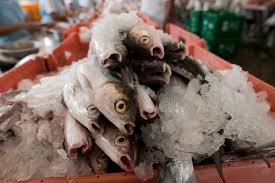The handling, processing, and marketing of fish products are essential complementary functions of all food production systems. Women traditionally play a major role in these activities. In most developing countries, women dominate the markets either as buyers or sellers of food.
For most women, marketing is a secondary activity that provides the only source of needed cash income. The marketability of fish products is an important constraint in the development of aquaculture. Moreover, processing and marketing activities provide the greatest opportunities for employment within the aquaculture industry.
Read Also: The Appearance and Features of Tuna Fish
Fish Handling Practices
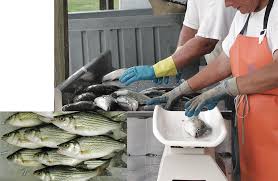
Pond harvest is highly labor-intensive, especially in developing countries including Nigeria. The help of the entire family, as well as other villagers, is generally required to reduce labor costs. Men seine the pond, while women use baskets to catch the remaining fish.
In most rural areas, all fish are seined at the end of the culture period. The smaller fish are kept for home consumption, and the larger fish are sold. All people involved in harvesting the pond receive a share in the production.
Multiple stocking and harvest imply careful handling and restocking of fish of unsuitable size. This practice is usually found on well-managed farms in Asia. Multiple harvests offer better opportunities for women than single harvesting; small quantities (up to 20 kg), which require less time and capital, can be marketed more easily by women.
Large-scale production farms generally use other marketing channels; often, women traders are only found further down the marketing chain.
The timing of pond harvests must be tailored to meet local supply and demand patterns. The time lapse between fish harvest and purchase by customers is critical for fresh fish.
In Asia, harvested fish are kept in fish-holding cages for on-farm sales for a maximum of one day before being sent to the market. Men are trained to transport and sell fish to hotels, supermarkets, and wholesalers. Market facilities (such as containers with aeration devices) may not be accessible to smaller, private retailers.
Fresh fish cannot be held for long periods without serious losses. If necessary, they are processed. Fresh fish, especially live fish, are highly preferred by consumers but present transport and storage problems.
Local transport may include baskets or containers carried on the head, on bicycles, or in small pickup trucks. Transport by boats can be found in estuarine areas in the riverine regions along the Niger and Benue Rivers, as well as along the Lagos Lagoon. This practice is also common in places such as Bangladesh, China, Guinea-Bissau, and Benin.
Transportation of Fresh and Live Fish
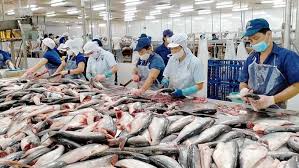
The transport of fresh or live fish requires:
i. Location of ponds close to the market to minimize handling and limit transportation time,
ii. Early morning harvests to transport fish at cool temperatures, and
iii. Markets equipped with ice facilities or water tanks (cement or small tin containers) with aeration devices and a drainage system.
Transport of live fish to remote markets is a more complex handling operation and requires investment in trucks with fish-holding cages, pumping systems to circulate the water, and aeration devices in the tanks.
Long-distance transport of fresh fish further requires ice or trucks with cooling devices. It may not be economically feasible to transport fresh or live fish to rural markets unless economies of scale can be achieved through high-volume transport.
Transport is expensive and may be unreliable or unavailable along bad roads during certain seasons. Live transport may only be feasible for urban centers where consumers are willing and able to pay higher prices for quality products.
Women do take part in the transportation of fish, but only at a minor level with less professional means. Most women do not have the necessary cash to invest in modern means of transport or the time for long-distance travel.
Fish Processing
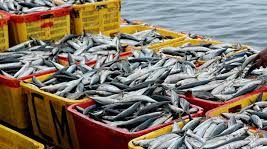
Women have always predominated in the fish processing sector on small-scale private, cooperative, or industrial levels. Small-scale enterprises can be characterized by a high degree of flexibility and are capable of responding to the supply of fresh products and consumer preferences.
Although most processing enterprises are run on a small-scale basis, their importance to the economy needs to be stressed. Large numbers of women can find employment and income in this type of industry.
The processing methods used can vary greatly and are dependent on:
- consumer taste,
- availability and costs of processing materials,
- technical knowledge,
- time needed for processing,
- price of the final product,
- storage facilities,
- marketability, and
- seasonal fluctuations.
In extensive and semi-intensive production systems, fish are processed when the product cannot be sold fresh, when cold storage plants are not present, or when the product is destined for remote markets. Small-scale salting, smoking, drying, and fermenting are performed by women near or inside the house and are considered domestic activities.
The introduction of special processing facilities off-farm or near the market is often not acceptable to women. Processing at home is preferred because women are able to combine processing activities with other domestic duties.
Young girls often help their mothers with different methods of processing. The final product is stored in or near the house for fear of theft. The processed fish is either sold to wholesale traders in large quantities or brought to the markets for private selling.
Economic pressure to shift from production for subsistence to commodity production has often resulted in reshaping the role of women. Small-scale enterprises tend to be taken over by modern processing plants.
Most fish processing plants are oriented towards export markets and not for home consumption. The range of fish species available on local markets and the marketing opportunities for women changed as a consequence of the development of industrial processing.
Women have been seriously affected by this process. Inadequate analysis and neglect of the possibilities of traditional processing and marketing structures have excluded women from their main source of income. The need for cash income to buy basic goods has driven large numbers of women to the fish processing industries.
Lack of education and vocational training push women into less skilled and lower-paying jobs. For example, the deheading of shrimp is primarily a processing task executed by women. Most of these women do not have other options for work and generally belong to the lower social strata of society.
During periods of peak supply, they often work through the night to earn some extra income. The number of female workers in the fish processing sector in this aspect of the fish business tends to be very high, and it is similar to the situation in Southeast Asia.
The fish and seafood processing industries, in particular, suffer from seasonal fluctuations in supply. These fluctuations affect women more than men because most women are employed as low-category workers on a casual basis.
Although these fluctuations in supply often predominate in artisanal fisheries, the small-scale processing industry is capable of compensating for periodic deficiencies in supplies. Women may shift to less valuable fish, for example, or fish can be dried and kept for several months as a kind of savings account. This practice is common in northern Nigeria.
Seasonal fluctuations can be somewhat offset by planning aquacultural harvests. For instance, shrimp farmers can try to plan their harvest to coincide with a time of slack supply of marine products. Close contact between the industry and the producers, and knowledge about market fluctuations, is needed.
In Asia, for example, a market survey and analysis of world shrimp aquaculture are regularly published, which includes wholesale price trends and projected supplies. In the catfish industry in the USA, 88% of the catfish production is sold to the processors, so that 85% of the plant can be utilized during the year.
The remaining 12% of catfish production is sold to live handlers who carry the fish to distant markets. This centralization in processing regulates the supply to the markets, stabilizes prices, and guarantees long-term employment for the processors.
Read Also: The Appearance and Features of Tilapia Fish
Marketing of Fish Products: Challenges and Opportunities
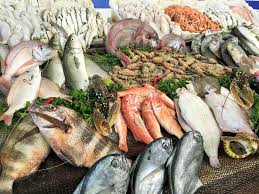
Restricted time budgets, and social and cultural factors limit women’s ability to participate in marketing. Marketing of home products usually provides rural women with their only source of income.
Part of the gains are often reinvested in business dealings, with the rest spent to cover domestic and personal expenses such as food, clothing, health care, school fees, etc.
Both in rural and urban areas, fish customers become aware of a pond harvesting by informal contacts and buy their fish at the pond site. Most of the customers are women, who use the fish for home consumption or local marketing. Presently, a kilo of live catfish sells for N350-400, depending on location and average size of fish.
The closer the market is to the farm, the fewer intermediaries and the greater the chance that women become actively involved in marketing aquatic products.
The Catfish Farmers Association of Nigeria is presently working on this aspect of fish marketing by creating various sales outlets around the cities so that fish can reach the final consumers at affordable prices. In general, women have been quick to respond to opportunities created by growing demand for their produce.
Confined to domestic tasks, the majority of women are small entrepreneurs on a part-time or seasonal basis. Only a few women have established themselves as full-time fish sellers. Women fish traders either handle the crop of their husbands or buy fish from different sources.
Fish mammies collect fish directly at the landing places, as seen around the Lagos Lagoon, and most fish mammies are in some way related to the fishermen and often take part in financing fishing operations.
These financial commitments guarantee their share in the fish harvest. Fishmongers with a fixed relationship to the fishermen only pay the fishermen after the product is sold. In all other cases, the fish is sold directly by auction. In most fishing communities, the customers’ groups are restricted by traditional relationships.
But in the case of marketing farmed fish, the culturist himself, perhaps in relation to a link or network of market establishments, dictates the trend since he solely finances his business.
There are often distinctive patterns of division in selling different products. Generally, the sale of products requiring large capital investment or long-distance travel is in the hands of men.
Although it is impossible to separate factors like freedom of mobility, the efforts and costs of traveling, and transporting goods to the market, etc., women are less mobile and have less access to financial support than men, so in most cases, they hire cabs for this purpose.
In the eastern part of Nigeria, it was observed that three categories of dried fish were sold in Afikpo market. First, the stockfish from Europe was sold exclusively by men.
Indigenous river fish like the bonga and the enyaoca were sold by both men and women, and the smaller dried river fish was exclusively sold by women, often in combination with a wide range of other food products.
Price Determination in Fish Marketing
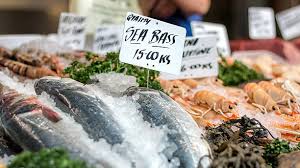
Fish can be obtained by money, barter, or through gift exchange. In non-monetized societies, the barter equivalents are fairly standardized, although bargaining does occur at the retail level as well as in transactions between traders and wholesalers.
The transition from barter to a money economy has seriously affected existing market patterns. The increase in production as a result of the modernization of the fisheries sector has attracted traders formerly not engaged in fish processing and marketing. Women have often been displaced by new groups of traders with bicycles, greater access to cash, and greater mobility.
In a free market system, the prices of fish are not fixed and are determined by a complex of factors. These include:
- transport cost,
- production cost,
- supply and demand,
- competition,
- processing technique,
- variety of fish.
Traders will take into account their transport and marketing costs as well as prices of substitute foods when deciding what price to charge. Price fluctuations can be explained largely in terms of availability, quality, and purchasing power of the customer.
Prices are generally lowest during fish harvest and rise as supplies diminish. The purchasing power of rural consumers is greatest just after the agricultural harvest, while it is greatest in urban centers at the beginning of the month after payday.
Greater capital investment in aquaculture will lead to higher market prices. Intensive systems usually supply urban centers where large quantities can be absorbed and high prices obtained.
Depending on the intensity of the system, the investment in aquaculture can be quite considerable compared with the family budget. In the absence of banks, fish farmers often have to borrow money from a money-lender (including market women).
Sometimes money is borrowed in exchange for the fish yield. In such a case, the money-lender makes a contract with the fish farmer at an agreed price.
In more intensive systems, the fish harvest is often sold to fixed traders or by auction. The fish farmer has to know the costs of production to determine his lowest acceptable price.
The price obtained will depend on the quality of the fish and the numbers at the auction. On the one hand, this can give the fish farmer the security that his products are all sold, while on the other, the price might be below the average price for that moment.
Road construction around intensive farms makes the fish landing sites more accessible to traders with modern trucks. Most fish mammies are not able to modernize because of time, education, and cash constraints.
Their role is consequently reduced to petty traders of less valuable fish or as wage laborers in the processing industry. Only those women who have established an independent financial position are capable of keeping and extending their position as fish traders in this situation.
On the other hand, the flow of money that comes from the development of market transactions and urban centers has opened up new possibilities for market women to extend their trade and even become money-lenders.
The dependency of urban centers on rural production is, in fact, greater and more direct than it first appears. However, urban wholesalers must buy bulk quantities from retailers in local markets. High preservation, transport, and purchase costs, therefore, raise the prices in urban markets. Consequently, many city dwellers are still willing to travel to rural markets to buy at low prices.
Problems of Post-Harvest Activities in Fish Handling and Marketing
Many of the problems and constraints encountered in handling, processing, and marketing are common to both men and women.
Limited access to resources, insufficient credit facilities, inadequate transport means, bad roads, poor processing and marketing facilities, price policies, etc., are all factors constraining the development of processing and trading of fish and fish products in the developing world.
Production policies and projects often ignore the role of processing and marketing. Interventions usually concentrate on modern enterprises and distribution to larger markets instead of supporting individual or collective activities. Insufficient incentives and financial support will continue to constrain rural distribution systems.
Apart from the constraints common to both men and women, women often face an extra set of gender-specific problems. Domestic activities, limited time disposition, no title to land or cattle, and no access to credit make women more disadvantaged compared with men.
An analysis of the role of women in the production, processing, and marketing sectors is often lacking in project planning. The introduction of a new production system or technology often ends up demanding more labor from women while allocating most of the benefits to men.
Project planners cannot foresee the risks and disincentives for women. Processing plants and markets have been constructed without prior consultation with the intended users. On many occasions, the inappropriateness of new technologies and constructions could have been avoided if participatory development was pursued.
Small-scale processing and marketing is a competitive rather than a cooperative action. A spontaneous solidarity of women generating a communal enterprise to obtain credit and to protect themselves against other commercial traders is not to be expected.
Management Procedures for Improving Post-Harvest Activities
Women’s participation in aquaculture is not taken into account by planners and policymakers. A full understanding of the role of women as traders indicates their economic significance for the functioning and further development of aquaculture.
Opportunities for women to discuss their constraints and opportunities can draw attention to the risks and disincentives not foreseen by project planners.
In extensive and semi-intensive aquaculture production systems, harvesting the pond is a communal activity, and the fish are primarily destined for local consumption and marketing. Women are actively involved in the handling of fish from small-scale production with local transportation.
Small-scale handling has been neglected by project planners. The handling of fish in extensive and semi-intensive systems needs more attention in the form of training, extension, and credit.
Particular attention is needed to improve quality control of fish to prevent deterioration during fish handling operations and to develop more products for domestic consumption.
Processing of aquatic products is considered to be women’s work. Although most processing enterprises are run on an informal basis, their scale and way of operation make these enterprises important for the employment and income generation of women.
Inadequate analysis and neglect of these enterprises have often resulted in a disruption of the rural fish supply and the position of women. Support of small-scale processing is critically needed.
The development and extension of appropriate fish preservation and processing technologies should be promoted. Training of women should be arranged in such a way that disruption of daily work is avoided.
Intensive systems are capital-intensive, and their produce is primarily destined for urban centers where better prices can be obtained. Transport to urban centers requires sophisticated equipment and good roads.
Women’s access to selling and transport is limited by lack of cash, transport, and market facilities. More attention to appropriate transportation services and marketing facilities at local markets can be of benefit to people and can reduce transportation costs.
Inadequate market facilities, such as lack of ice plants, containers with aerating devices, processing facilities, protected (cold) storage facilities, good roads, shelter, transport facilities, etc., often limit the development of trading enterprises.
Strategies to overcome constraints for marketing would benefit both sellers and buyers. A seminar (FAO, 1977) on market women in West Africa gives the following recommendations:
- more attention to the role of traders in the formulation and development of policies,
- development of appropriate technologies for food processing and preservation,
- construction and maintenance of rural roads,
- provision of transportation and spare parts,
- promotion of the establishment of trade associations,
- increase of credit facilities to traders by involving trade associations as guarantors for individual loans,
- vocational training (bookkeeping, application forms for credit),
- improvement and expansion of existing market facilities (storage, loading space for vehicles, shelter, childcare centers, health clinics),
- provision of information by marketing advisory services,
- supply of essential inputs for farms (fertilizers, seeds, etc.),
- improvement of communication channels between traders, producers, and relevant local extension agencies and government institutions.
Markets can be focal points for rural development. The better the market facilities, the more people are motivated to participate. Insufficient support and domestic duties often force women to restrict these activities and to continue production and marketing on a limited scale.
There are, however, several examples of women exploring new activities and setting examples for others who are equally poor. Freedom to handle marketing and finances are critically important for women and result in a better living for the family.
Equal access to credit and participation in market development for women is needed to consolidate their position as traders. Women are often not acquainted with official credit facilities.
The existing household funds are usually the only source of money for women. Self-help savings groups and rotating funds provide a good basis for the development of credit opportunities.
Examples of trade associations specialized in aquaculture products are found in China and Malaysia on several administrative levels. These associations are responsible for the purchasing, distribution, market supply, and storage of farm and fish products.
The fish are purchased on the basis of a contract negotiated between the association and the producers. Payment in advance is possible; moreover, the association supplies necessary inputs to the fish farms like fertilizers, seeds, and feeds.
Because of their close contacts with the producers and their capacity to control supply and demand at the markets, they can be considered an important regulating and promotional agency.
Although different in many aspects, these associations have a somewhat similar role to the fish mammies in small-scale capture fisheries being practiced in Nigeria. These similarities include:
i. interdependency between producers and traders,
ii. secure delivery and marketing,
iii. financial management to the benefit of both parties,
iv. social services in times of misfortune.
Do you have any questions, suggestions, or contributions? If so, please feel free to use the comment box below to share your thoughts. We also encourage you to kindly share this information with others who might benefit from it. Since we can’t reach everyone at once, we truly appreciate your help in spreading the word. Thank you so much for your support and for sharing!
Frequently Asked Questions
We will update this section soon.

